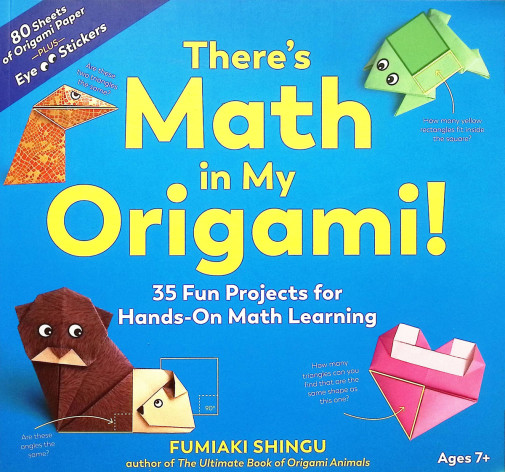We use cookies to make your experience better. To comply with the new e-Privacy directive, we need to ask for your consent to set the cookies. Learn more.
There's Math in My Origami
SKU
031946
ISBN
9781615197798
Grade 3-7
These icons are designed to help you quickly understand and learn important information about our products.
Teaching Method
Traditional
Teacher-centered curriculum commonly used in classrooms that may include a text, teacher manual, tests, etc.
Charlotte Mason
A methodology based on the work of a 19th century educator who maintained that children learn best from literature (Living Books), not textbooks.
Classical
A methodology based on the Latin Trivium (three stages of learning), including the grammar stage (memorization and facts), logic stage (critical thinking), and rhetoric stage (developing/defending ideas).
Unit Study
A thematic or topical approach centered around one topic that integrates multiple subject areas.
Montessori (Discovery)
A methodology based on the work of a 20th century educator that emphasizes student and sensory-driven discovery learning and real-life applications.
Other
Other methodologies
Religious Content
Secular
Contains content contrary to common Christian beliefs (i.e. evolution).
Neutral
Avoids religious or theoretical topics or presents multiple viewpoints without preference.
Christian/Religious
Faith-based or including instructional religious content.
Learning Modality
Auditory
Learns through listening, talking out loud or reading out loud.
Visual
Learns through seeing, prefers written instructions and visual materials.
Kinesthetic/Tactile (Hands-On)
Learns through moving, doing and touching.
Multi-Sensory
Curriculum that employ a variety of activities/components.
Presentation
Sequential
Curriculum progresses through well-defined learning objectives. Emphasizes mastery before moving to the next topic.
Spiral
Topics and concepts are repeated from level to level, adding more depth at each pass and connecting with review.
Conceptual/Topical
Focus is on the “why,” often with a unifying concept as well as specific skills; coverage may be broader.
Teacher Involvement
Low Teacher Involvement
Student-led materials; parent acts as a facilitator.
Medium Teacher Involvement
A mix of teacher-led time and independent student work.
High Teacher Involvement
Teacher-led lessons; may utilize discussions, hands-on activities and working together.
Additional Materials Required
No other materials needed
Everything you need is included.
Other Materials Required
There are additional required resources that are a separate purchase.
Other Materials Optional
There are additional resources mentioned or recommended but are not absolutely necessary.
Consumable
Consumable
Designed to be written in; not reusable.
Non-Consumable
Not designed to be written in; reusable.
Our Price
$14.95 $14.95 $11.25
Rainbow Savings: $3.70
Description
This neat origami book is great for elementary students who are learning geometrical shapes, angles, and basic fractions. Each of the 35 origami projects also includes a math problem to solve. The origami projects range in level of difficulty from beginner to expert and include both written and visual step-by-step instructions. Includes 95 pages of instructions, 5 pages of bonus math activities, 80 sheets of origami paper, and two sheets of eye-shaped stickers to put on finished projects.
Publisher's Description of There's Math in My Origami
Discover how fractions, shapes, and symmetry turn a flat sheet of paper into a 3D work of art! Each one of the 35 amazing projects in There’s Math in My Origami! invites kids to:
- Follow the simple, step-by-step instructions
- Flex their math skills by answering a fun quiz question
- Fold adorable origami like they’ve never seen before!
Details
| Product Format: | Paperback |
|---|---|
| Brand: | The Experiment |
| Grades: | 3-7 |
| ISBN: | 9781615197798 |
| Length in Inches: | 7.9375 |
| Width in Inches: | 8.5 |
| Height in Inches: | 0.5625 |
| Weight in Pounds: | 1.3 |
Videos
Reviews

